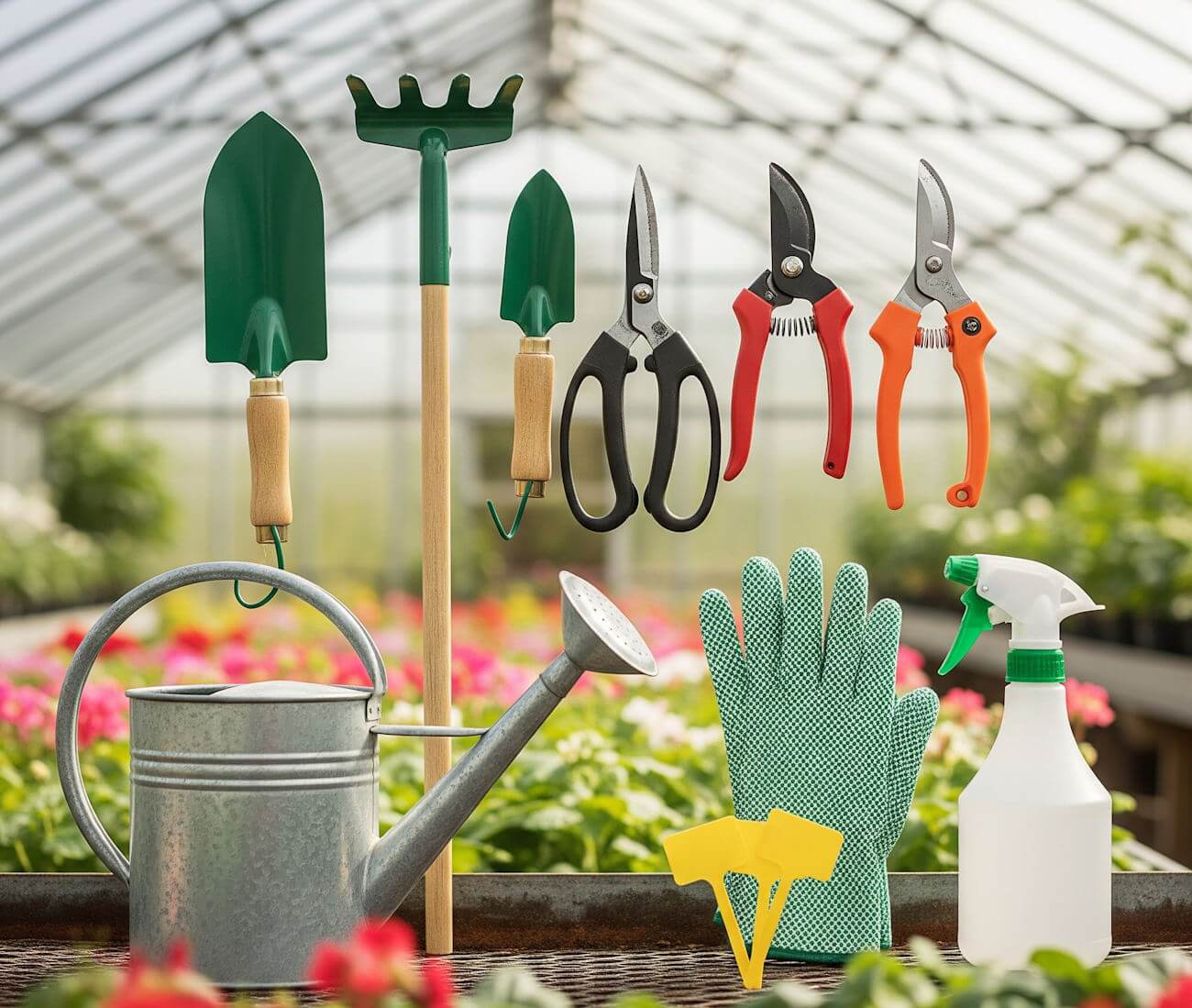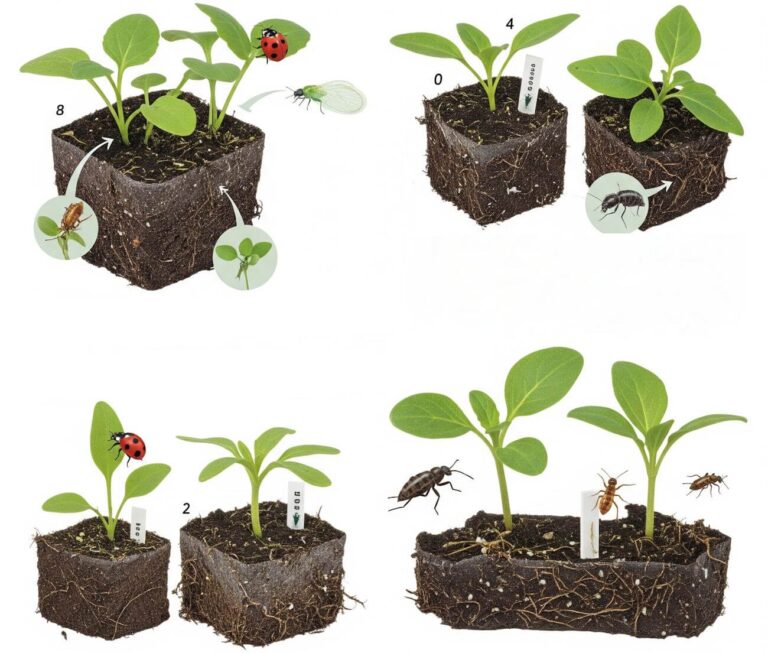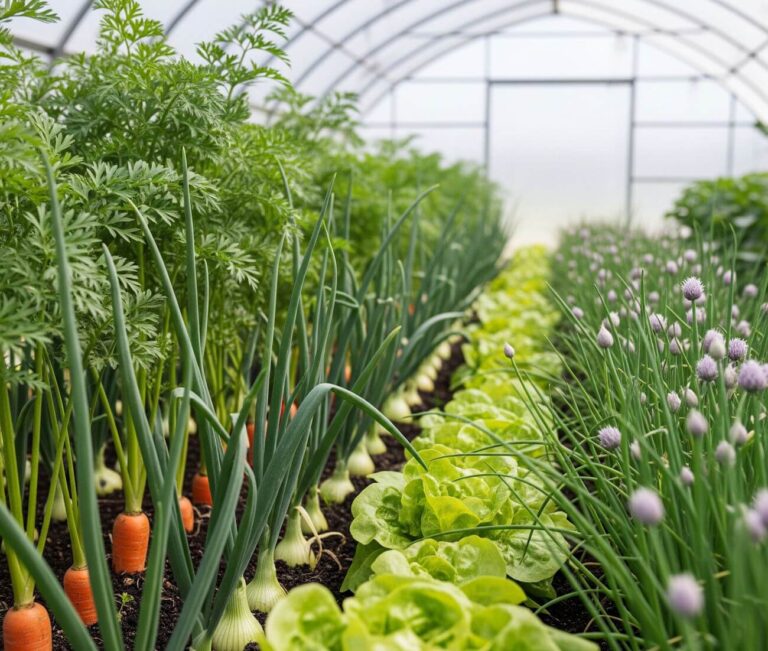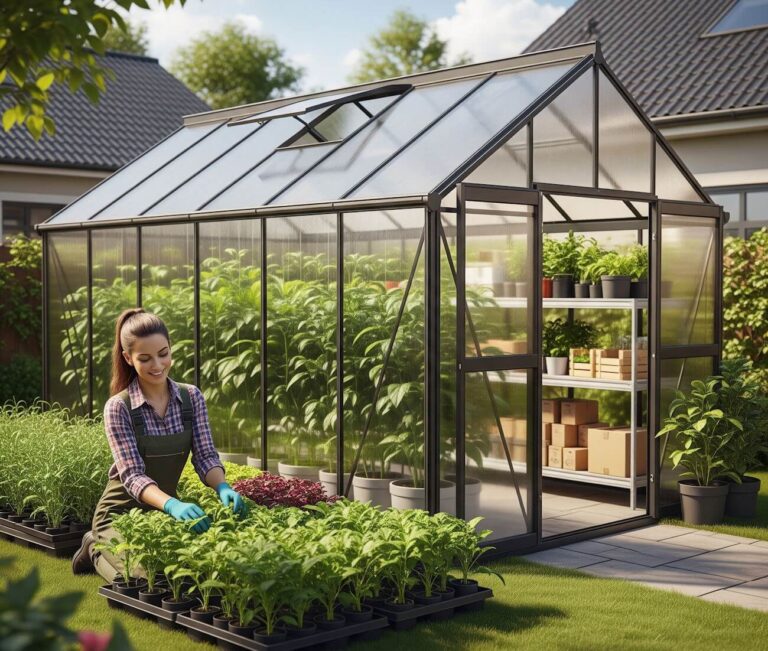Greenhouse gardening is a unique approach to cultivating plants that utilizes a controlled environment to maximize growth potential. Unlike traditional gardening, which often relies on external weather conditions, greenhouse gardening provides a dedicated space where temperature, humidity, and light can be meticulously regulated. This environment allows for the extension of growing seasons, enabling gardeners to cultivate a variety of plants year-round, regardless of geographical climate constraints.
One of the primary benefits of greenhouse gardening is the enhanced protection it offers to plants. By sheltering crops from harsh elements such as wind, frost, and heavy rainfall, a greenhouse creates optimal conditions for growth. Additionally, the controlled environment reduces the likelihood of diseases and pests, which can decimate crops in traditional outdoor settings. Consequently, greenhouse gardeners often experience a significantly better crop yield, providing both aesthetic pleasure and nutritional rewards.
To fully benefit from the advantages of greenhouse gardening, it is essential to utilize the right tools. Whether it is specialized climate control systems, planting containers, or watering apparatus, selecting appropriate tools can greatly enhance the efficiency and productivity of a greenhouse. These tools not only assist in maintaining the ideal conditions for plants but also streamline the gardening process, allowing for easier management and care of crops. Moreover, investing in quality equipment can lead to long-term savings by reducing the need for replacements and repairs caused by environmental wear and tear.
In summary, greenhouse gardening represents a modern adaptation of traditional horticulture, bringing forth numerous advantages that cater to the needs of the contemporary gardener. By understanding its unique qualities and the importance of having the right tools, enthusiasts can enjoy the fruits of their labor in a sustainable and efficient manner.
Essential Hand Tools for Plant Care
In the journey of greenhouse gardening, having the right hand tools is pivotal for ensuring the health and productivity of your plants. The primary hand tools that every gardener should consider include trowels, pruners, and hand forks. Each of these tools serves a specific purpose, enhancing the overall efficiency of plant care.
A trowel is one of the fundamental hand tools, vital for digging, planting, and transplanting plants. It typically features a pointed blade, which allows gardeners to penetrate various soil types with ease. When selecting a trowel, consider the ergonomics of the handle and the material of the blade. High-quality stainless steel trowels not only ensure durability but also facilitate easy cleaning, preventing soil from sticking. A comfortable grip can reduce strain during prolonged use, making the gardening experience more enjoyable.
Pruners, or hand pruners, are essential for maintaining plant health through effective trimming and shaping. Sharp blades are crucial for making clean cuts, which can help promote healthy growth and minimize damage to the plant. When choosing pruners, opt for those with a spring-action mechanism and comfort grips, as they can significantly reduce hand fatigue during frequent use. Regular maintenance, such as sharpening blades, will also ensure that you always achieve a precise cut.
Another indispensable tool is the hand fork. This tool is excellent for loosening soil, aerating plant beds, and incorporating compost or nutrients into the soil. A sturdy hand fork, typically made from stainless steel or carbon steel, can withstand the rigors of frequent use while providing effective performance in your greenhouse. The design should allow for easy maneuvering in tight spaces while ensuring that it can effectively break up compacted soil.
In conclusion, incorporating these essential hand tools into your greenhouse gardening arsenal will significantly enhance your plant care routine. Trowels, pruners, and hand forks, along with their ergonomic designs and material quality, are crucial for achieving effective gardening outcomes. The right tools empower gardeners to cultivate vibrant, healthy plants consistently.
Watering Solutions: From Hoses to Drip Irrigation
A crucial aspect of successful greenhouse gardening is ensuring that plants receive adequate water for optimal growth. Traditional hose watering has long been a method used by gardeners, offering both flexibility and ease of use. A standard garden hose can reach various areas within a greenhouse, allowing for targeted watering. However, this method is often less efficient, as it can lead to overwatering or underwatering certain sections due to the uneven distribution of water. Additionally, reliance on manual operation may result in inconsistent watering schedules, which can adversely affect plants.
In contrast, drip irrigation systems provide a precise watering solution that can significantly enhance moisture management in a greenhouse environment. These systems deliver water directly to the plant roots through a network of tubing and emitters, minimizing evaporation and runoff that occurs with traditional watering methods. Drip irrigation is particularly advantageous for delicate plants or those with specific moisture requirements, as it allows gardeners to tailor water delivery to individual needs. This precision helps prevent water wasting while ensuring that plants maintain optimal hydration levels.
When selecting a watering solution for a greenhouse, several factors should be considered, including plant types, greenhouse size, and water source availability. For example, larger greenhouses with various plant species may benefit from implementing a drip irrigation system. The upfront investment in such a system may be higher; however, its efficiency and time-saving capabilities can yield long-term benefits. For smaller greenhouses, a traditional hose may still serve as an effective watering option when used with a timer for consistent application.
Ultimately, understanding the specific watering needs of your greenhouse plants is essential in choosing a suitable method. Striking a balance between efficiency and practicality will lead to healthier plants and reduced water consumption.
Soil Preparation and Mixing Tools
Soil quality is a fundamental factor influencing the success of greenhouse gardening. It directly affects plant health, growth rates, and yields. Therefore, having the right soil preparation and mixing tools is essential for every greenhouse gardener. These tools facilitate the creation of an ideal soil mix that caters to the specific needs of different plants, promoting optimal growth and vitality.
One of the primary tools required for soil preparation is the soil mixer. This tool automates the mixing process, ensuring a consistent and homogeneous soil blend, which is crucial for providing plants with the necessary nutrients and aeration. By utilizing a soil mixer, gardeners can efficiently combine various components, such as peat moss, compost, and perlite, to create tailor-made soil mixes suitable for various plant types. This efficiency is particularly beneficial when dealing with larger quantities of soil.
In addition to soil mixers, traditional hand tools like shovels play an integral role in soil preparation. Shovels are versatile and can be used for a variety of tasks, including transferring soil, digging, and leveling. They enable gardeners to manually check and adjust soil texture, ensuring it meets the desired specifications for different plants. Furthermore, wheelbarrows are also indispensable in the soil preparation process. They simplify the transportation of bulk materials, making it easier to move soil amendments and prepared mixtures from one location to another within the greenhouse.
Overall, effective soil preparation is paramount in greenhouse gardening, and having the right tools can significantly enhance this process. Utilizing soil mixers, shovels, and wheelbarrows, gardeners can create optimal soil mixes tailored to their plants’ needs, ultimately leading to flourishing greenery and productive harvests. The right tools not only streamline the mixing process but also contribute to healthier soil and, consequently, more robust plants.
Temperature and Humidity Control Equipment
Maintaining the right temperature and humidity levels within a greenhouse is crucial for the health and productivity of plants. To achieve optimal growing conditions, several essential tools must be employed. Among these, heating systems play a fundamental role. These systems vary in type, including gas, electric, and radiant heaters. Each type has its advantages, and the selection depends on the specific greenhouse size and the climate. Proper heating ensures that plants do not experience cold stress, which can slow growth or damage young seedlings.
In conjunction with heating devices, thermostats are indispensable in controlling the greenhouse environment. These instruments monitor the air temperature and can automatically regulate the heating system to maintain a specific temperature range. This automation not only promotes plant health but also conserves energy, making it a sustainable option for gardeners.
Humidity control is equally vital for fostering an ideal growing environment. Humidifiers are commonly used to add moisture to the air, thus preventing dry conditions that can lead to wilting and stress in plants. Different types of humidifiers are available, including ultrasonic, evaporative, and steam humidifiers, each offering distinct benefits based on the greenhouse’s size and design.
Ventilation is another key factor in managing temperature and humidity levels. Adequate airflow helps regulate these factors while reducing the risk of diseases caused by stagnant air. Greenhouses may employ manual or automatic ventilation systems, including roof vents and sidewalls, that can be adjusted based on external weather conditions. By integrating these various tools—heating systems, thermostats, humidifiers, and ventilation options—gardeners can create a balanced microclimate that enhances plant growth and overall health. Understanding the interconnectedness of these temperature and humidity control equipment will enable gardeners to optimize their greenhouse environments effectively.
Pest and Disease Management Tools
Effective pest and disease management is crucial for maintaining a healthy greenhouse environment. To achieve successful plant growth, greenhouse gardeners must equip themselves with essential tools and adopt strategies that prioritize integrated pest management (IPM). This holistic approach combines various methods to control pests and diseases while minimizing risks to beneficial organisms and the surrounding ecosystem.
One of the most fundamental tools for pest management in a greenhouse is the insect trap. These traps can be utilized to capture various insects, including aphids, whiteflies, and thrips. The use of sticky traps, for instance, can help monitor pest populations, thereby allowing gardeners to take action before infestations occur. Additionally, pheromone traps are effective for targeting specific pests, further aiding in the management and reduction of their populations.
In addition to traps, sprayers play an essential role in disease management. Whether for applying organic pesticides or fungicides, the choice of sprayer can significantly impact the effectiveness of the treatment. Handheld or backpack sprayers can ensure that applications cover both the upper and lower surfaces of leaves, which is crucial in preventing fungal diseases that thrive in moist environments. Moreover, regular monitoring of plant health is vital; by checking for any signs of distress or infestation early on, gardeners can implement corrective measures swiftly.
Another important strategy in pest and disease management involves preventative measures, such as crop rotation, selecting disease-resistant plant varieties, and maintaining optimal overall plant health. Utilizing beneficial insects, such as ladybugs and lacewings, can also provide natural pest control solutions while safeguarding the greenhouse ecosystem. By consistently monitoring for pests, implementing IPM techniques, and using the proper tools, greenhouse gardeners can effectively manage pest and disease challenges.
Harvesting and Storage Tools
Effective harvesting techniques and proper storage practices play a critical role in the quality and longevity of produce cultivated within a greenhouse environment. The right tools are essential to ensure that crops are harvested efficiently while minimizing damage to the plants and the fruits or vegetables themselves. Among these crucial tools are knives, baskets, and storage containers.
Knives are indispensable for greenhouse gardeners when it comes to harvesting mature crops. There are various types of harvesting knives available, each designed to cater to specific plants and harvesting requirements. For instance, a curved blade knife is ideal for cutting leafy greens, as it allows for quick and clean cuts without damaging neighboring plants. A serrated knife can be particularly useful for harvesting fruits with tougher skins. The choice of knife should be dictated by the type of crops being cultivated to facilitate a more efficient and clean harvest.
Once the crops are harvested, the next step is proper transportation and storage to retain their freshness and quality. Appropriate baskets are essential for carrying harvested produce. Woven baskets, for example, allow for ventilation which helps in reducing moisture buildup, thereby lessening the risk of spoilage. When it comes to storing the harvested produce, selecting suitable containers is vital. Airtight containers help in maintaining optimal humidity levels and protecting crops from pests and contaminants. Additionally, temperature regulation during storage is crucial; for instance, root vegetables are best kept in cool, dark environments, while many fruits thrive at slightly warmer temperatures.
Implementing proper harvesting techniques and utilizing the right storage tools can greatly extend the shelf life of the crops. By selecting appropriate tools and adhering to best practices, greenhouse gardeners can ensure that the produce they grow remains fresh and of high quality for an extended period. Investing in quality harvesting and storage tools ultimately enhances the overall productivity and success of a greenhouse operation.
Organizational Tools for Efficiency
Creating an orderly workspace is a fundamental aspect of success in greenhouse gardening. The benefits of maintaining organization extend beyond mere aesthetics; they significantly enhance workflow and productivity. A well-organized greenhouse allows gardeners to locate tools and materials quickly, reducing the time spent searching for items and enabling them to focus more on plant care and cultivation.
One essential organizational tool is shelving units. These units provide vertical storage, maximizing space in often limited greenhouse environments. By allowing gardeners to neatly stack pots, soil bags, and gardening supplies, shelving units help in keeping the greenhouse tidy. Furthermore, adjustable shelves accommodate various sizes of items, enabling customized organization tailored to individual gardening needs.
Tool organizers, such as pegboards or storage bins, are also vital for maintaining efficiency. These tools allow for the arrangement of frequently used items such as pruning shears, watering cans, and fertilizers in an accessible manner. By designating specific locations for each tool, gardeners reduce the likelihood of misplacing essential implements, which can ultimately disrupt their routine.
Labeling is another simple yet effective method for organization. Using clear and visible labels on storage containers and shelving helps in identifying contents at a glance. This level of organization minimizes confusion and streamlines the gardening process, enabling gardeners to quickly find what they need and move on to the task at hand. Color-coded labels can further enhance the organization by categorizing items according to their purpose or use, whether it be potting, harvesting, or planting.
Incorporating these organizational tools fosters an efficient environment that not only saves time but also enhances the overall gardening experience. A tidy greenhouse contributes to better plant management and ultimately leads to healthier garden growth. Therefore, investing in shelving units, tool organizers, and labeling systems is a wise strategy for any serious greenhouse gardener striving for efficiency and productivity.
Conclusion and Recommendations for Greenhouse Gardeners
As we have explored the essential tools that every greenhouse gardener should consider, it is clear that having the right equipment can significantly impact the success of your gardening endeavors. From effective watering systems to temperature control mechanisms, each tool plays a pivotal role in fostering a thriving greenhouse environment. These tools not only streamline maintenance tasks but also enhance plant health and yield.
For beginners, starting with a basic toolkit is advisable. Essential tools include a quality watering can or hose, a pair of pruning shears, and soil testing equipment. These fundamental items will help new gardeners establish good practices and understand their plants’ needs. Additionally, investing in a reliable greenhouse structure, with proper ventilation and shading, will support the growth of various plants, providing a solid foundation for any gardening journey.
As for advanced gardeners, a more comprehensive toolkit may be beneficial. Beyond the basic tools, options such as automated irrigation systems, advanced pest control measures, and hydroponic setups can significantly enhance yield and efficiency. Experienced gardeners can also benefit from using soil enhancers and nutrient delivery systems to optimize plant growth further. These tools often require a steeper investment but can pay off in increased productivity and reduced labor costs.
Building your toolkit gradually can be a smart approach. Start with essential items and focus on acquiring quality tools that suit your specific gardening needs. Prioritize functionality and durability over price, as a well-made tool can last for years and improve your gardening experience. Investing in effective tools tailored to your greenhouse will ultimately lead to a rewarding gardening journey, allowing you to unlock the full potential of your plants while enjoying the calming pursuit of greenhouse gardening.







